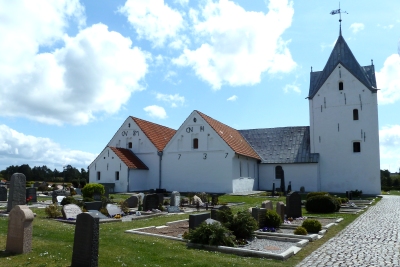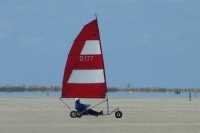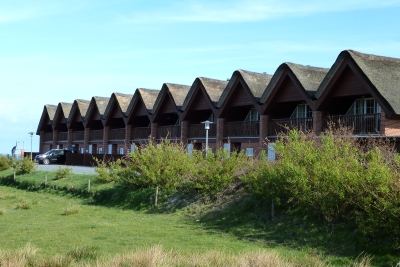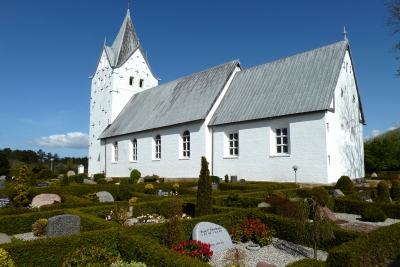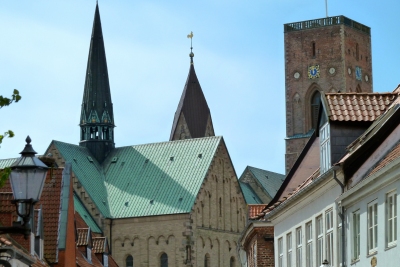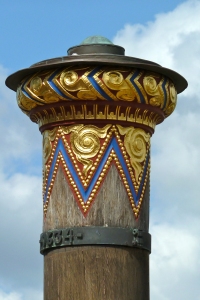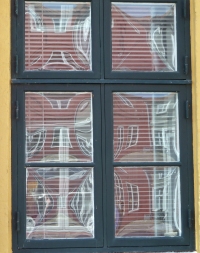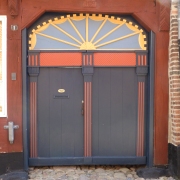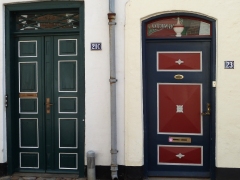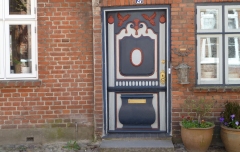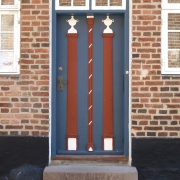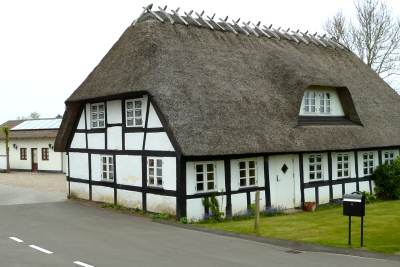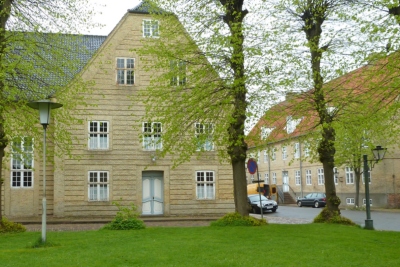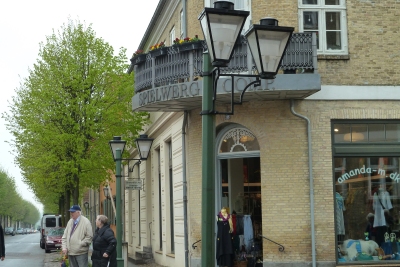Leaving Rømø we drove
north along the coast and diverted through a small village, with another
white church, to reach the causeway across to the small flat island
of Mandø, but turned back as the road beacame a rough track, with warning
signs about the tides. We could have crossed on the Mandø traktor-bus
which only ran a couple of times a day in the low season, and there were very few tourists around.
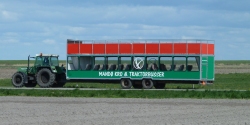
We continued on narrow back roads to Ribe, the oldest town in Denmark,
with its large cathedral, surrounded by a maze of medieval streets. We
stayed at the large campsite just north of the centre, with many static
vans and chalets and a unique rotating turntable caravan pitch to make
the most of the sun. The site wifi was by a remote LAN adaptor, but
luckily connecting it to my Zoom travel modem enabled us to use our
tablets. Another feature we came across was the large undercover
communal cooking and eating area, with gas hobs provided. The
town centre was worth strolling around with many distinctive
house doors, and other architectural features including windows
with curved panes of glass. We also came across an attractive flood
marker on the quayside. Unfortunately the main square and the
cathedral were being extensively rebuilt, but we found some interesting
small shops to browse in before returning to the campsite.
We
left the next morning after using the site's excellent free
motorhome service point. Although they accepted the fees in Euro notes
we were given the change in Krone. We drove east along empty roads, and
reached the outskirts of Kolding, where we joined the busy ring road and
headed for the Danish Design Museum at Trapholt, overlooking a fjord.
Using the satnav as the road signs are "economical" in Denmark, we had
to cross three lanes of a main road to turn left at a junction, and
found that Danish drivers were very reluctant to give way despite our
signalling and slowing down to a crawl. We eventually found the modern museum in a
housing estate. There were several galleries with Danish chairs by famous designers as well as some quirky modern
paintings, sculptures and fashion displays including suits made from
packaging.
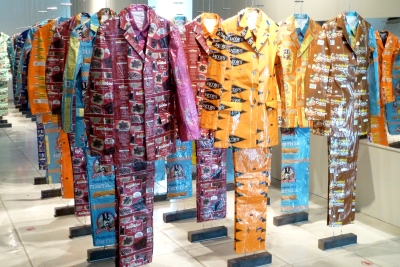
After a couple of hours we had seen most of the exhibits and
although there was an outdoor sculpture park, access was only by guided
tours at set times, so we drove through the centre of Kolding by the
waterside quays, and headed south across some low hills (at last), to
another ACSI discount campsite situated down a wooded
valley at Grønninghoved Strand, again mostly static vans where we
were the only touring van in for the night. A short stroll along the
beach was enough as it was rather cool and damp. From the "children playing" sign, Danish must be a difficult language to learn.
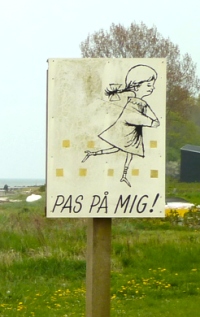
The
next day we decided to head back south to Germany, and called in to the
small town of Christiansfeld, an austere town built of yellow brick
buildings, set out in a grid of tree lined streets, by followers of the
Moravian church in the late eighteenth century. The shops mostly
sold
gifts, clothes and the local delicacy of honey and gingerbread
biscuits. As we entered the town
we came across a procession of nursery children dressed up as
Vikings, in an
amazing range of large prams and bicycle buggies. They were then
enjoying
rides around the town in a horse drawn wagon (Their mums must be fit
but at least it's flat around here). After a lunch stop we drove
down to the German border just north of Flensburg.
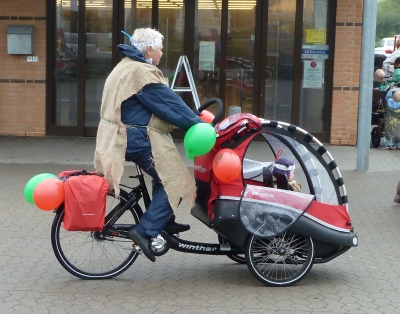
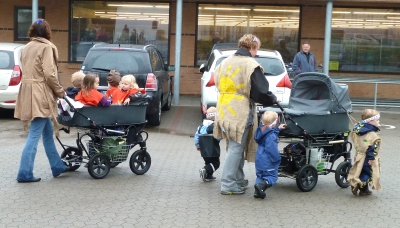
Childrens day out
